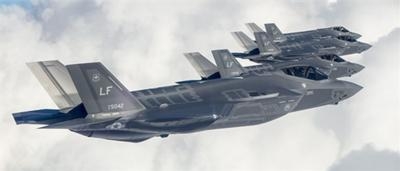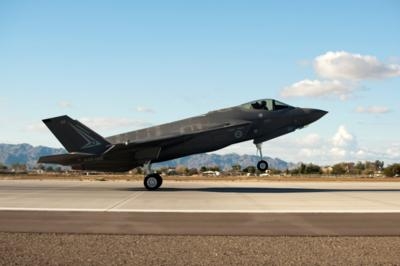Base Continues Long History Of Flight Training
The US Army Air Corps deployed a team to Phoenix, Arizona, in 1940 to scout for a place to train fighter pilots. The Sonoran Desert south of the Arizona capital offered ample airspace and optimum flying conditions. The training base was soon established west of the city and named Luke Field after Phoenix native and Medal of Honor recipient Lt. Frank Luke, Jr., who recorded eighteen aerial victories before being killed in action in France during World War I.

During World War II, more than 17,000 pilots were trained at Luke, making it the largest single-engine advanced training school in the United States. During the war, the base earned the nickname, “Home of the Fighter Pilot.”
That fighter pilot training tradition continues today at Luke with the F-35 Lightning II. The base has been designated as the primary F-35A training base for the US Air Force as well as for eight international partner air forces and several other countries purchasing F-35s under Foreign Military Sales, or FMS, programs.
“Five years from now operations at Luke will appear similar to the glory days at the height of F-16 training here when we had more than 200 F-16s on the ramp and F-16s were in the pattern all of the time,” said Brig. Gen. Scott Pleus, the 56th Fighter Wing commander. “By 2020, every sunshade on the ramp will have an F-35 under it.”
That prediction is well on its way to becoming fact at Luke in mid 2015. When Pleus took over command of the wing in June 2014, the base had three F-35s on the ramp. “The aircraft were not flying that often,” he recalled. “Today, I have a full fighter squadron with twenty-five airplanes, and they are flying as often as we want them to fly. The transition is going better than I had hoped.”
Those first twenty-five aircraft fill the wing’s first training squadron, the 61st Fighter Squadron. Subsequent F-35s arriving in 2015 will populate the second training unit, the 62nd FS. Eventually, the 56th Wing will have six F-35 training squadrons flying 144 F-35s.

The progress leading up to this point has been swift. The 61st FS and its associated 61st Aircraft Maintenance Unit formally stood up in October 2013. The first F-35s arrived in March 2014. The wing completed its 100th F-35 sortie in August 2014. The academic training center that contains classrooms and simulators essential for F-35 pilot training opened in October 2014. The first international partner aircraft, two Royal Australian Air Force F-35As, arrived in December 2014.
The progress continued in March 2015 with the first student pilot sortie, F-35 transition training for Pleus himself. The first substantial deployment of F-35s from Luke to another operating location came in April 2015 when ten aircraft were sent to Nellis AFB in Nevada. The 1,000th sortie was flown that April as well. The first pilot training class began in May 2015. The first international student, an Australian pilot, flew in August 2015 as part of the second class of future F-35 pilots to be trained at Luke.
(USAF images)
 Classic Aero-TV: In Praise of Alabamas Patriot Aircraft USA
Classic Aero-TV: In Praise of Alabamas Patriot Aircraft USA NTSB Final Report: Cirrus Design Corp SR22
NTSB Final Report: Cirrus Design Corp SR22 ANN's Daily Aero-Term (12.21.25): Dead Reckoning
ANN's Daily Aero-Term (12.21.25): Dead Reckoning ANN's Daily Aero-Linx (12.21.25)
ANN's Daily Aero-Linx (12.21.25) Aero-News: Quote of the Day (12.21.25)
Aero-News: Quote of the Day (12.21.25)




